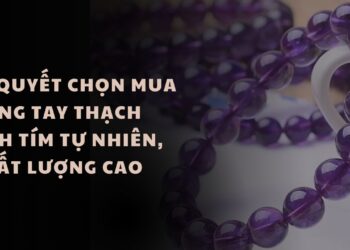That may not sound like a huge deal. After all, this is a wireless headphone, and most of the time you’ll use it as a wireless headphone. But it’s also a noise-canceling headphone that you’ll want to travel with and plug into a plane’s in-flight entertainment system. Unfortunately, since the Solo Pro doesn’t have a standard headphone jack, you’ll have to buy an optional $35 Lightning-to-3.5mm Audio Cable to do that.
The Beats Solo Pro offers design, feature and performance upgrades over the Solo3 Wireless.
Sarah Tew/CNET
If this were a $150 or even $200 headphone I’d be more willing to forgive that omission. But this is a $300 headphone, so it seems absurd that a cable that costs no more than a few bucks to make – and maybe less – isn’t included. I can’t tell you whether Beats or Apple, which owns Beats, made the decision to omit the cable, but I find it cynical and have lowered my rating by half a point as a result of the omission. (The latest iPhones no longer include a Lighting-to-3.5mm adapter in the box to accommodate standard headphone cables – you need to shell out $9 for that – but a set of Lightning EarPods are still included).
That gripe aside, as I said, this is a very good headphone and an improvement over its predecessor, the Beats Solo3 Wireless. And not only in terms of its design: Its features and performance also seem significantly improved.
It uses the company’s Pure Adaptive Noise Canceling (Pure ANC), “derived from the over-ear Studio3 Wireless, with updated tuning to accommodate the on-ear form factor,” Beats says. With a tap of button, you can turn off that noise-canceling to save battery life or hit the button a second time to enter a transparency mode that allows you to hear the outside world. The headphone is equipped with six microphones, two of which are beamforming mics that are designed to hone in on your voice when making calls or talking to your voice assistant.
Most of the top noise-canceling headphones offer similar multimicrophone arrays to monitor and filter noise. But as you might expect, Apple-owned Beats is also touting the inclusion of Apple’s new H1 chip – the same one found in Apple’s second-generation AirPods and Beats’ own Powerbeats Pro true wireless earphones.
According to Beats, not only does that chip allow for easy pairing with iOS devices (Android users get that feature via an app) and more stable wireless connections, it’s the engine that drives the advanced sound processing and noise canceling. It also allows for always-on Siri, so you can call up Apple’s voice assistant simply by saying “Hey, Siri.” You can use your voice to skip tracks forward and back or raise and lower volume.
Additionally, as with the AirPods and Powerbeats Pro, these headphones are compatible with Apple’s new Audio Sharing feature that allows you to pair two headphones simultaneously to any compatible Apple device running iOS 13 or higher, so you can listen to the same music or watch the same video with a friend.
Read more: Best noise-canceling headphones of 2019
The headphones come in several color options.
David Carnoy/CNET
All those upgrades – along with new drivers – are on the inside. Beats has also made some big changes on the outside, but it’s stuck with physical buttons for volume and track controls instead of moving to touch controls. With a design that’s slightly reminiscent of the company’s entry-level wired EP headphones, there’s some metal in the headband.
Beats reps told me the Solo Pro is a sturdier headphone than the Solo3 Wireless. It’s certainly heavier than the Solo3, weighing 9 ounces (255 grams). The metal also adds some rigidity, alleviating some of the pressure or clamping feeling you often get from on-ear models. I only tried the headphones for about 20 minutes, but they seemed comfortable – right up there with the most comfortable on-ear models I’ve used. That doesn’t mean it will be a perfect fit for everyone – some may still find it clamps a little too firmly for their tastes – but I liked it how it felt on my head better than the Solo3 Wireless.
What’s also impressive is how the soft, memory-foam-filled earpads seal out sound passively. Even wearing the headphones without noise canceling turned on, ambient sound is remarkably muffled because your ears are tightly (but comfortably) covered.
The Lightning port.
David Carnoy/CNET
The Solo Pro’s noise canceling isn’t quite on par with the Bose Noise Cancelling 700 Headphones or Sony WH-1000XM3, but it’s not far off. I used the headphones in the streets of New York and on the subway, and it was satisfyingly effective in those environments. It also did a good job muffling simulated airplane cabin noise in a Beats demo I experienced.
As for sound quality, the headphones sound smooth and well-balanced with punchy bass that isn’t boomy. A few years ago, Beats took to heart the complaints about the sound quality of its headphones – particularly the bloated bass – and has tightened things up. You’re still going to get plenty of bass, but it’s more defined.
Compared to the Sony WH-1000XM3, which also costs around $300, this is a little bit more forward-sounding headphone (particularly in the midrange) and just doesn’t sound as big or open as the Sony. For listening to pop music, which tends to be inherently compressed, the Beats are going sound quite good (and yes, the majority of people who by this headphone are probably going to be listening to pop or hip hop music). But the WH-1000XM3 offers richer, more textured sound.
A couple of other things worth noting: Like the Solo3 Wireless and Studio3 Wireless, these headphones fold up but don’t fold flat. Folding – and unfolding – them is how they turn on and off. The new Sennheiser Momentum 3 has the same auto on/off feature, which is kind of nifty, but some people won’t like that there’s no power button.
The protective case is more eco-friendly. Made out of recycled plastic, it’s got a felt-like feel to it, and I liked it better than Beats’ previous cases – particularly the Studio3’s uninspired hard case that takes up too much room in a bag.
The new felt carrying case.
David Carnoy/CNET
If you can overlook the cable omission and somewhat high price tag aside, the Beats Solo Pro are an appealing headphone. They have an attractive, streamlined design and more premium look and feel than the Beats Solo3 Wireless. They also sound better than that model.
Eventually, of course, these will go sale, and that’s probably the time to buy them. Unfortunately for Beats, these compete directly with another Apple product, the AirPods Pro, which costs less ($250). Yes, the Solo Pro sound better and have more effective noise-canceling. But while the tiny AirPods Pro also don’t plug into an in-flight entertainment system, they’re a lot easier to carry around, and I’d rather drop $250 on them than $300 on these.
Solo Pro’s key specs
- Apple H1 chip delivers faster, more stable wireless and is also compatible with both iOS and Android devices.
- Always-on (hands-free) Siri for iOS users – activate Siri without touching a button.
- Get up to 3 hours of full-featured playback with a 10-minute charge using the included Lightning cable.
- Up to 22 hours with Pure ANC (noise canceling) or Transparency turned on.
- Up to 40 hours without Pure ANC (noise canceling) or Transparency turned off.
- Weight: 9 ounces (255 grams).
- Colors options: black, ivory, gray, dark blue, light blue and red.
- Price: $300, £270, AU$429







